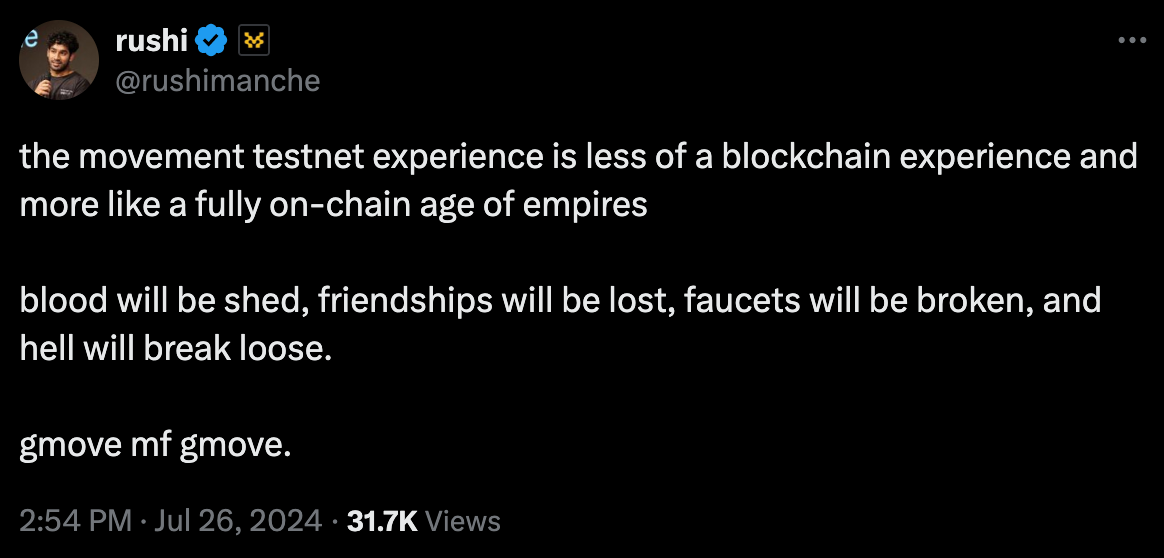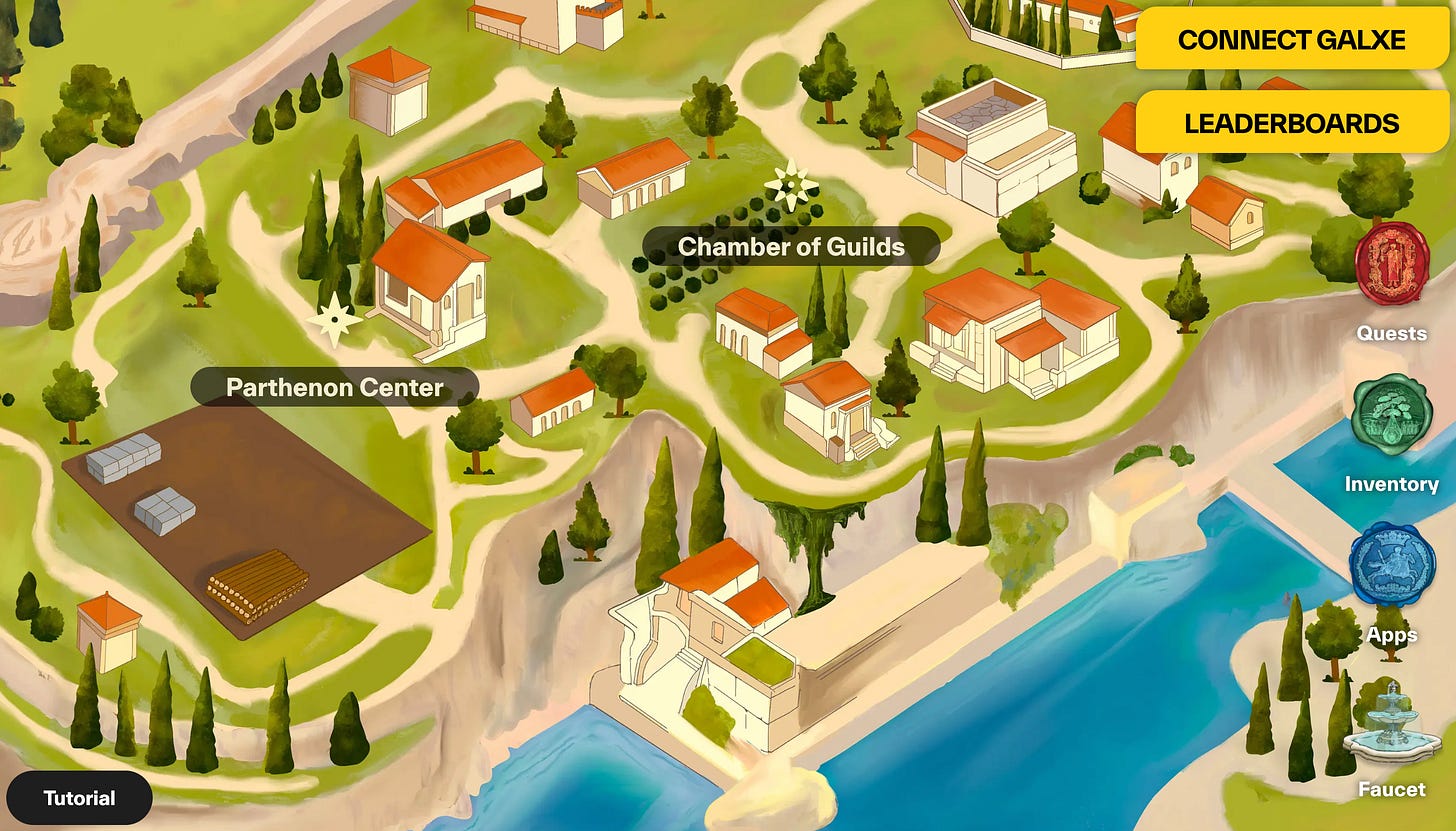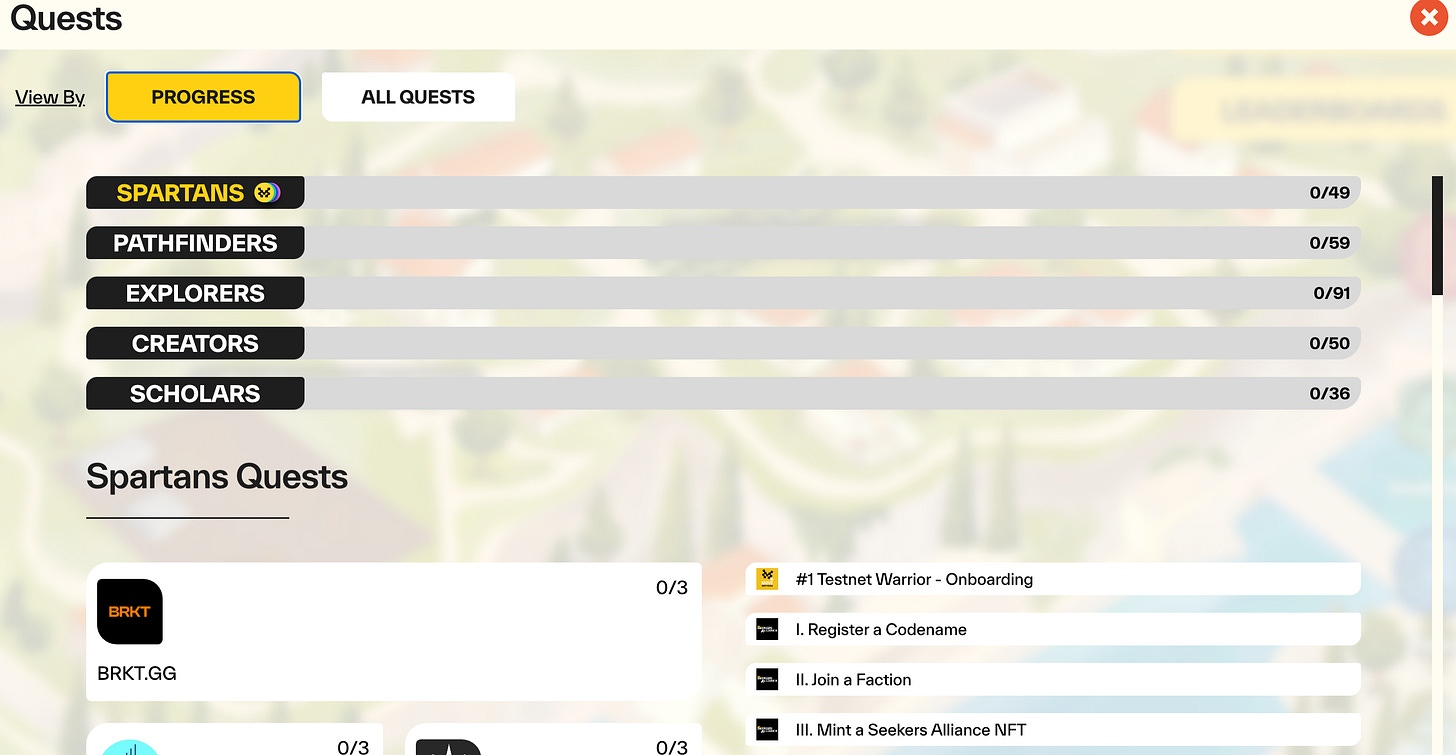Movement Labs Releases The Parthenon Testnet
Here's everything you need to know about Movement Labs' incentivized testnet campaign, along with some of the tech the team is pioneering.
Movement Labs has just released their incentivized testnet campaign, inviting participants to help build the “Parthenon”. This launch marks a significant milestone in the space, not only because Movement is one of the biggest communities in the modular space, but also because they’ll be bringing new technologies to the forefront - most notably, the MoveVM.
But more on this later. First, let’s take a look at the Parthenon testnet, how you can participate, climb the leaderboards, and earn future rewards.
The Parthenon Testnet
The Parthenon was first unveiled back in January, when the team first announced their 6-phase roadmap, which took them from initial validator onboarding, to now, with the testnet release.
So how exactly does the Parthenon work?
As Movement founder, Rushi, states, this testnet experience is more like an onchain game of empires.
This reminds me of a more advanced version of Defi Kingdoms, for those who remember the once popular onchain game.
Granted, the Parthenon is still an early version of what i’d expect the final product to look like, but we can see the vision.
Ultimately, the point of this testnet is to complete quests and challenges in exchange for resources, which may convert to some other form of future rewards, later down the line.
These quests are organized by guild, with each guild focusing on a different skillset.
Spartans: for those who’s like to explore the Movement ecosystem ad test out new dapps
Pathfinders: answer community questions, plan games, and create educational content
Explorers: Help spread the Movement by tweeting, joining community spaces, or help onboard new partners & collaborations
Creators: this is for the artists who’d like to help with graphics, and potentially an NFT launch
Scholars: you’re in it for the tech, so talk about the tech
Masons: make educational content aimed at devs & builders
Each guild has its own set of quests you can start achieving, as well as its own set of resources you can win for completing these quests. Here’s the Spartan quests page, for example:
Aside from the challenges listed on the “quests” tab, there are also several other dapps users can interact with to earnn future rewards. Just click on one of the dapps you’d like to test out, and it’ll take you to Galxe, where you can try it out.
So considering you may be interacting with different dapps on Movement, which wallets are compatible?
MetaMask (for MEVM dapps)
So now let’s take a quick look at some of the technology Movement Labs is developing.
Movement Labs’ Key Components
As a reminder, Movement Labs is building an ecosystem of Move-based chains and has unveiled two of their own:
M1: A permissionless Move-based blockchain running as an Avalanche subnet.
M2: The first ZK Move-EVM L2 on Ethereum, composed of the following components:
Execution: MoveVM
Data Publication: Celestia
Sequencing: M1
Settlement: Ethereum
M2 hosts the Parthenon testnet.
Move Language, MoveVM, & Move-EVM
M2 is built using the Move programming language, originally developed for Facebook's Diem project. Move is designed to provide safety and flexibility in executing complex transactions. You can learn more about the Move language here.
The MoveVM, a virtual machine built to run Move programs, enhances the security and efficiency of smart contract execution. Unlike the Ethereum Virtual Machine (EVM), MoveVM is optimized for parallel execution, reducing bottlenecks and improving transaction throughput.
Move-EVM is a unique approach that allows the simultaneous execution of Move and Ethereum smart contracts, providing developers with the best of both worlds. This interoperability is crucial as it enables the seamless migration of Ethereum-based applications while leveraging Move’s advanced features.
Modular Move
It’s important to distinguish between Movement Labs and Movement:
Movement Labs: The team developing M1, M2, and the rest of the Movement ecosystem.
Movement: The entire Movement ecosystem, including M1, M2, and other Move-based chains that launch within this ecosystem.
This brings us to modular Move.
Movement Labs is spearheading the development of the Open Framework for Modular Move. This open-source initiative aims to standardize and streamline the creation of modular blockchain components, making it easier for developers to build Move-based apps and rollups. The framework’s modularity allows it to integrate seamlessly with various blockchain stacks, enhancing its versatility and utility.
In essence, builders can leverage the Move stack to create their own custom, dedicated Move-based chains. Beyond Movement’s core technology (M1 sequencer, MoveVM, etc.), developers can choose their preferred data availability (DA) solution. While Movement itself uses Celestia for DA, the team plans to integrate other DA solutions into their stack, providing more options for developers.
Why This Launch Matters
This launch comes at a time when the web3 community is intensely focused on enhancing virtual machines' capabilities to support more complex and high-volume transactions - this is why you see the “next-gen VMs” narrative taking off right now.
The ecosystem is currently exploring alternatives to the EVM to address scalability and security issues. MoveVM, along with other next-gen VM teams such as Fluent & Fuel, represent the next generation of virtual machines, promising to scale Ethereum and onboard more developers by offering a more robust and flexible development environment. Movement Labs' testnet is a pioneering step in this direction, demonstrating practical applications of this cutting-edge tech.
Join the Testnet
Developers and end-users alike are invited to participate in the incentivized testnet. This is an opportunity to engage with the Movement ecosystem, contribute to its development, and earn rewards in the process.
For more information on how to join, visit the Movement Labs Testnet Page.




